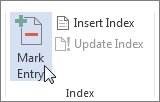
An index lists the terms and topics that are discussed in a document, along with the pages that they appear on. To create an index, you mark the index entries by providing the name of the main entry and the cross-reference in your document, and then you build the index.
You can create an index entry for an individual word, phrase, or symbol, for a topic that spans a range of pages, or that refers to another entry, such as "Transportation. See Bicycles." When you select text and mark it as an index entry, Word adds a special XE (Index Entry) field that includes the marked main entry and any cross-reference information that you choose to include.
After you mark all the index entries, you choose an index design and build the finished index. Word collects the index entries, sorts them alphabetically, references their page numbers, finds and removes duplicate entries from the same page, and displays the index in the document.
These steps show you how to mark words or phrases for your index, but you can also Mark index entries for text that spans a range of pages.

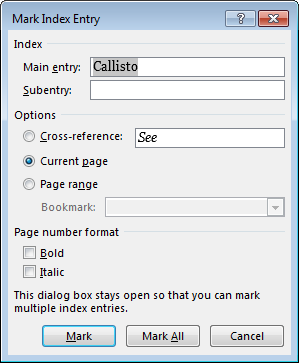
You can edit the text in the Mark Index Entry dialog box.
After you mark the entries, you’re ready to insert the index into your document.
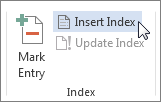
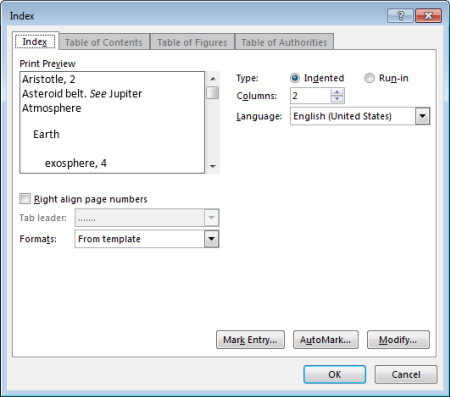
In the Index dialog box, you can choose the format for text entries, page numbers, tabs, and leader characters.
If you mark more entries after creating your index, you’ll need to update the index to see them.
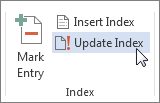
.
If you find an error in the index, locate the index entry that you want to change, make the change, and then update the index.

. To update the index, click the index, and then press F9. Or go to References >Update Index.